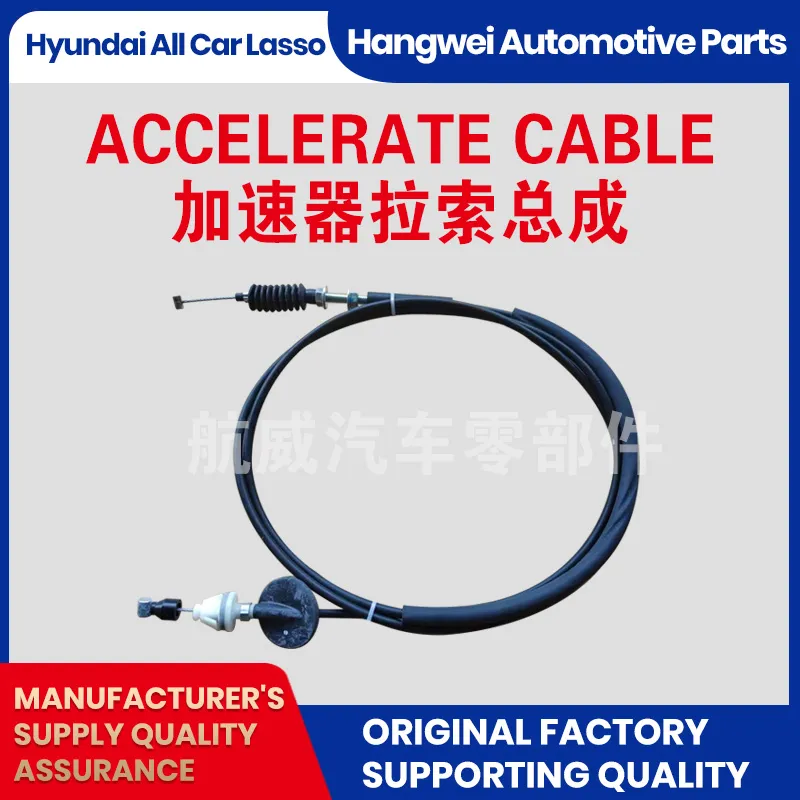Cable Control for Manual Throttle System in Automotive Applications
Understanding Manual Throttle Cables A Comprehensive Guide
In the realm of automotive engineering and design, the throttle cable plays a crucial role in the operation of an internal combustion engine. The manual throttle cable, in particular, is a vital component that allows drivers to control the power output of their vehicles by linking the accelerator pedal to the throttle body. This article will delve into the functionality, benefits, and maintenance of manual throttle cables, providing readers with an informative perspective on this essential automotive feature.
What is a Manual Throttle Cable?
A manual throttle cable is a flexible wire mechanism designed to transmit the motion of the accelerator pedal directly to the throttle body of an engine. When a driver presses the accelerator pedal, the cable pulls on the throttle linkage, which opens the throttle plate and allows air (and fuel) to enter the engine. This process increases engine power and accelerates the vehicle. The simplicity and responsiveness of a manual throttle cable system make it a popular choice in many vehicles, particularly in older models and certain high-performance applications.
How Does It Work?
The operational mechanism of a manual throttle cable is straightforward yet highly effective. The cable is typically housed within a protective casing, which prevents wear and tear from environmental factors. When the accelerator pedal is depressed, it pulls the cable, transmitting that force to the throttle body. This action causes the throttle plate to open and close, regulating the air-fuel mixture entering the engine.
The manual throttle cable's design allows for a direct connection between the driver’s input and the engine's response. This results in instantaneous feedback, meaning that drivers can feel the engine’s performance dynamically as they adjust speed. The absence of electronic components in this setup can be advantageous for those looking for a classic driving experience or those who prefer simpler systems that can be easily repaired or adjusted.
Benefits of Manual Throttle Cables
1. Direct Control The principal advantage of manual throttle cables is the direct mechanical link they provide between the driver and the throttle. Many enthusiasts appreciate this level of control, which offers a more engaging driving experience.
2. Simplicity Manual throttle cables typically have fewer components compared to electronic throttle control systems. This simplicity can lead to fewer electronic failures, making it easier to diagnose and fix issues.
manual throttle cable

3. Weight In some cases, manual systems can be lighter than their electronic counterparts, contributing to overall vehicle performance and efficiency.
4. Cost-effective Maintenance Repairing or replacing a throttle cable is often less costly than dealing with complex electronic throttle systems. This is particularly beneficial for older vehicles where parts are more readily available.
Maintenance of Manual Throttle Cables
While manual throttle cables are generally reliable, regular maintenance is essential to ensure their longevity and performance. Here are some tips for maintaining manual throttle cables
- Routine Inspection Check the cable for wear, fraying, or kinks. Look for signs of corrosion around the connections and inspect the casing for damage. - Lubrication Regularly lubricate the cable and its components to reduce friction and prevent binding. Use a silicone or lithium-based lubricant for best results.
- Proper Tension Ensure the cable has the correct tension. A cable that is too loose may lead to sluggish throttle response, while a tight cable can cause unwanted acceleration.
- Replacement If you notice any significant wear or damage, replace the throttle cable immediately to avoid throttle failure that could lead to dangerous driving conditions.
Conclusion
The manual throttle cable remains an integral part of many vehicles, providing direct and immediate control over engine performance. Understanding its functionality and the importance of maintenance can help car enthusiasts and everyday drivers alike appreciate this classic feature. Whether you're maintaining an older model or pursuing a performance upgrade, the manual throttle cable offers a unique and reliable driving experience that continues to resonate in today's automotive landscape.
-
Upgrade Your Clutch System with Premium Hydraulic Clutch LinesNewsJul.31,2025
-
Unlock the Power of Precision with Our Throttle CablesNewsJul.31,2025
-
Unleash Power and Precision with Our Accelerator CablesNewsJul.31,2025
-
Experience Unmatched Safety with Premium Handbrake CablesNewsJul.31,2025
-
Enhance Your Vehicle's Performance with Quality Gear CablesNewsJul.31,2025
-
Workings of Clutch Pipe and Hose SystemsNewsJun.04,2025
